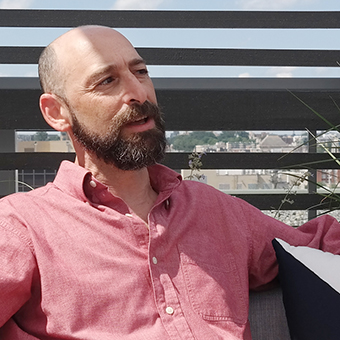A Day in the Life of Doug

Doug
Doug is from New York, but he has lived in the DC area for so long now that he’s a Washingtonian, whether he likes to admit it or not. He joined DFI (which is what Avascent was called prior to 2007) in 1998. Before that, he was a reporter covering the DoD for the trade publication Inside the Pentagon. Doug works on a variety of projects, but mainly in the core defense arenas of aircraft, C4ISR systems, shipbuilding, and other weapons systems. He works with a mix of corporate and government clients.
8:30 AM
I ride my bike to work a couple of days per week, which surprisingly takes about the same time as driving, given the traffic. I’ll usually scan the trade publications over a cup of coffee to keep current on the latest happenings among defense companies and programs.
9:00 AM
I hold a virtual project meeting with a team from our Ottawa office, which serves clients in the Government of Canada. We review the “task authorization,” which states the client’s key questions and the issues they want us to analyze. As with many of these projects, today we need to help our clients understand best practices among other governments who tackle similar defense (oops, sorry, “defence”) acquisition challenges.
In this meeting, we go around the team to summarize what each of us has learned so far in our research. We try to sort through why we see different approaches among different governments for similar challenges: Are they motivated to achieve different outcomes? Are they organized so differently that they approach decision making differently, even if they center on the same technology?
10:00 AM
I catch up on emailing with various clients. One of the things we try to emphasize in our business development efforts is to constantly deepen our client network. If we can forge close client relationships, we can work with individuals as they move up and around their companies, or leave to join different companies. Part of this involves sharing news we’ve heard or perspectives we’ve developed that may be of interest in their work, whether we’re “on the clock” or not.
11:45 AM
Get a cab across the river to have lunch with a client in Crystal City. (Amazon has not yet taken over; it’s still a center of the defense industry, given its proximity to the Pentagon.) I have lunch at Chipotle with a client I’ve known for many years. Like me, he’s a defense budget nerd who wants to trade rumors on when we can expect the Federal budget for fiscal year 2020 to be issued, and what program cuts or adds might be planned.
1:30 PM
Back in the office, I spend some time with the Avascent Analytics team on our forecast of the US DoD budget. (Most of the team is in the Washington office, but depending on what we’re working on, we may also link up with the London or Warsaw offices). The Analytics group maintains an alternative forecast of DoD spending that our clients use as a more realistic take on market developments than the DoD budget itself, which can be optimistic about funding growth and program execution. Members of the Analytics team track portfolios of programs that vary by armed service. We discuss how funding limitations, design challenges, DoD customer objectives, and congressional perspectives may shape our forecasting decisions.
3:30 PM
We need to describe our budget forecast to clients, and so I generate an initial storyboard in PowerPoint to lay out the arguments we’ll make and data displays we’ll show. For better or worse, PowerPoint is the lingua franca of the defense industry. (Although many of our clients in the Canadian government prefer the actual written word.) Learning how to “tell a story” in PowerPoint is an acquired skill, even for people who are strong writers.
5:00 PM
A meeting of the Avascent Managing Directors. It can be hard for all of us to be in the office at the same date and time, given various clients meetings and travel. As much as we need to address management, staff and business development issues, these meetings are a good chance to compare notes on the pulse of the firm: Is staffing getting tight under the weight of project work? Have we noticed the same individuals staying late, or here on the weekend? Can we plan to give her a break, or shift him to a less demanding assignment next?
6:15 PM
Ride home. Hopefully, there are no pedestrians standing in the bike lane.
